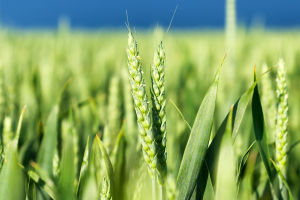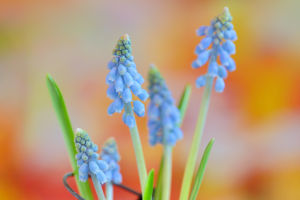
Have you ever wondered how wheat grows, what it's made of, or why it's used in so many of our favorite foods? Today, we’re diving deep into this golden grain that shows up everywhere—from noodles and bread to snacks and even fuel.
Whether we’re curious eaters, food lovers, or just interested in the science of what we eat, understanding wheat helps us make better food choices. Let’s walk through the life of wheat together.
What does wheat look like?
Wheat is a grass-like plant that grows upright. Its stem is usually hollow but can have soft tissue inside near the bottom. Depending on how rich the soil is, the wheat stalk can produce several shoots. The leaves grow in alternating directions, and the flowers form in a spike at the top of the plant.
Each of these little flower spikes, called spikelets, usually holds two tiny grains—those are the parts we eat! These grains are covered in protective layers and can come in different shapes and textures depending on the variety. Wheat mostly pollinates itself, which means it reproduces without needing help from insects or wind.
Inside a wheat grain
A wheat grain might look tiny, but it’s packed with layers. From the outside to the inside, it has a fruit coat, seed coat, a layer that helps it absorb nutrients, the germ (where the new plant would grow), and the endosperm, which is rich in starch. The average grain is about 8 mm long and shaped like an oval with a groove on one side. Fun fact: It doesn’t stick tightly to its outer layer, so it’s easy to grind into flour!
Where does wheat grow?
Wheat grows in many places around the world, especially in areas with long daylight hours. It’s grown from sea level all the way up to high mountains, even at altitudes of 4,000 meters like in Tibet. There are two main types: spring wheat and winter wheat. Spring wheat is sown in early spring and harvested in summer—it grows fast, in about 100 days. Winter wheat, on the other hand, is planted in autumn and harvested the next summer, taking around 300 days.
What do we use wheat for?
Wheat is one of the main staples in our diet. After milling it into flour, we use it to make bread, buns, noodles, dumplings, cakes, cookies, and many other everyday foods. Beyond food, wheat can also be fermented into beverages or used as biofuel. The straw left after harvest is useful too—it’s often used to feed animals, cover roofs, or even make paper and woven goods.
Wheat’s nutrition power
Let’s take a closer look at what we’re getting when we eat wheat. Per 100 grams of hard red winter wheat, we get:
- 327 calories
- 71 grams of carbs
- 12 grams of fiber
- 13 grams of protein
- Rich in B vitamins, iron, magnesium, phosphorus, and zinc
It’s especially high in manganese and a good source of energy. But the exact nutrients can vary depending on where the wheat is grown. For instance, wheat from drier climates usually has more protein and better gluten quality—great for making bread. Meanwhile, wheat from wetter regions tends to be softer and less elastic, better for softer foods.
Things to keep in mind about wheat
While wheat is nutritious, it’s important to know that not everyone can eat it. Some people have a health condition called celiac disease, which makes their bodies react badly to gluten—a protein found in wheat. This condition is more common in some regions than others, but for people who have it, the only treatment is to avoid gluten entirely.
Chat Soon, Lykkers!
Isn’t it kind of magical how something as small as a grain of wheat can show up in so many parts of our lives? From breakfast to dinner, it’s always there—quietly filling our plates and fueling our days. Next time we’re enjoying a warm bun or slurping up noodles, let’s give a little thanks to this everyday hero.
What’s your go-to wheat-based comfort food? We’d love to hear your favorites—share them with us below!
Stop Eating Wheat For A Month And You'll be Surprised With What Happens To Your Body
Video by Natural Solution


